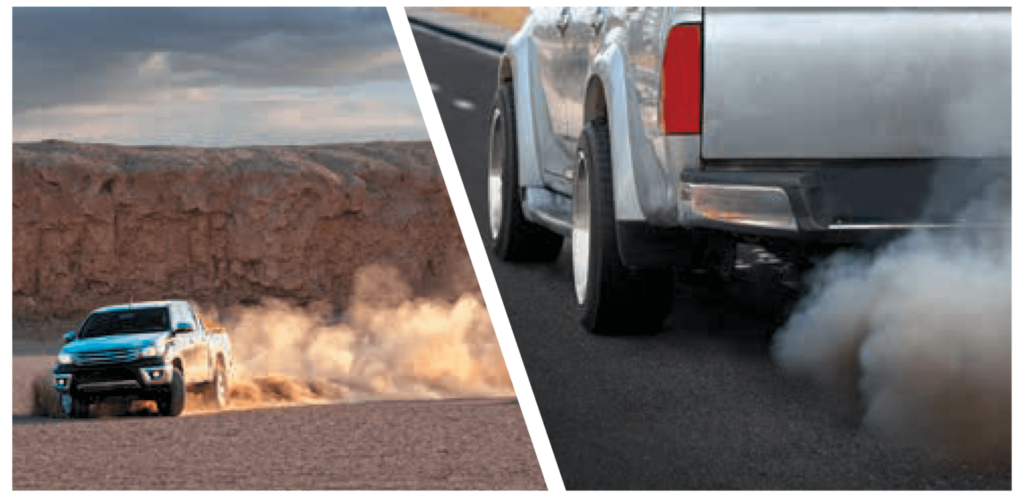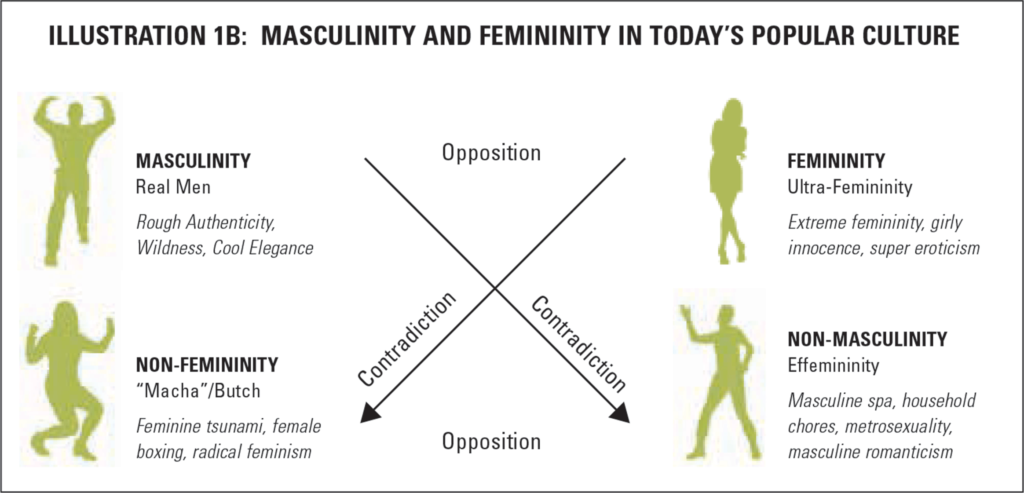Demystifying Semiotics: A Primer on How to Do Semiotic Decoding
Many qualitative researchers know the term semiotics and have a lot of curiosity about it, but don’t quite know where to get their questions answered. This article is written as an imagined dialogue between a qualitative researcher and a semiotician—a curious seeker and a friendly teacher—to demystify semiotics and understand how a semiotic analysis is actually carried out. The curious seeker’s questions exemplify the kinds of queries that I have had asked of me when working with qualitative researchers and marketers.
CS: Semiotics has been a buzzword for a long time. Its aura carries a lot of intellectual mystique and seems slightly arcane and inaccessible. Could you demystify it, and make it actionable and practical for qualitative researchers?
Semiotics has been a buzzword for a long time. Its aura carries a lot of intellectual mystique and seems slightly arcane and inaccessible. Could you demystify it, and make it actionable and practical for qualitative researchers?
FT: I agree with you that semiotics has made itself inaccessible by the use of heavy jargon and making simple things unnecessarily complex. That is a fair criticism. However, our goal is to make semiotics accessible and enjoyable.
I agree with you that semiotics has made itself inaccessible by the use of heavy jargon and making simple things unnecessarily complex. That is a fair criticism. However, our goal is to make semiotics accessible and enjoyable.
We are focused on the how-tos of the practice and making sure that semioticsbased analyses help clients solve their real-world business and brand challenges.
CS: Could you start by unpacking the term? What is semiotics, exactly?
Could you start by unpacking the term? What is semiotics, exactly?
FT:  Semiotics is the discipline that formally studies how signs, symbols, and narratives are constructed to create meaning. In its application for branding, marketing, and advertising, semiotics provides cultural intelligence; that is, semiotics provides insights about what kinds of cultural meanings are conveyed and created by particular signs, symbols, and narratives.
Semiotics is the discipline that formally studies how signs, symbols, and narratives are constructed to create meaning. In its application for branding, marketing, and advertising, semiotics provides cultural intelligence; that is, semiotics provides insights about what kinds of cultural meanings are conveyed and created by particular signs, symbols, and narratives.
Signs and symbols are all around us. Advertising material uses thousands of visual images as signs to convey its message and evoke a response from consumers. Examples range from images of chicken on a McDonald’s advertisement to a RAM truck in a television commercial to the American flag on a U.S. postage stamp.
For semioticians, the goal is to uncover the different meanings carried by these signs and symbols in a culture—meanings that may not be uniform across a culture and can vary depending on the context.
SIGNS
For Ferdinand de Saussure, an originator of semiotics, a “sign” is not one thing but the relationship between a “signifier” (e.g., a word, a company logo, an emoticon) and what that “signifier” conveys. Charles Sanders Peirce, another founding thinker in semiotics, said that we must also consider the person viewing or hearing the signifier to understand the sign.
Peirce’s concepts of a sign help us appreciate that no sign has one socially shared meaning among everyone and that a sign’s meanings shift over time.
NARRATIVES
Narratives are more than a simple storyline. They refer to story themes that occur in repetitive patterns, have a codified structure, and frame storylines around specific concepts.
- Winner—Loser is a narrative.
- Patriot—Traitor is a narrative.
- Victim—Oppressor is a narrative.
- Rebel—Tyrant is a narrative.
- Damsel in Distress is a narrative.
- The Journey of Life is a narrative.
For instance, a pickup truck for some symbolizes strength, freedom, and rugged individualism. For others, a big pickup truck symbolizes global warming and waste. A poster of a football star in a child’s bedroom carries a different meaning than when it is featured in an exhibition of popular culture.
Individuals do not arrive at meanings all by themselves, either. Meanings are influenced by a person’s membership in culture. Going back to the pickup truck example, the vehicles that a person’s peers and community members drive, and how these vehicles are represented in images and in stories in their community, impact the meaning held by people for different kinds of vehicles.

CS: It sounds like semiotics is a practice of interpretation. Qualitative research is also a practice of interpretation. So, what’s the difference between semiotics and qualitative research?
It sounds like semiotics is a practice of interpretation. Qualitative research is also a practice of interpretation. So, what’s the difference between semiotics and qualitative research?
FT:  Qualitative researchers interpret what consumers say. They work with what we call consumer “speak.” Semioticians interpret what consumers are seeing and hearing (e.g., a McDonald’s ad). They work with what we call consumers’ “surround.”
Qualitative researchers interpret what consumers say. They work with what we call consumer “speak.” Semioticians interpret what consumers are seeing and hearing (e.g., a McDonald’s ad). They work with what we call consumers’ “surround.”
This means that semioticians do not interview consumers as qualitative researchers do. They don’t observe consumers’ behaviors and practices as ethnographers do.
Semioticians read and interpret the “texts” that consumers read, watch, and listen to—the texts that influence consumers’ thought processes and beliefs. Semioticians identify what consumers may themselves not be conscious of and may not be able to articulate and express—but nevertheless influence their choices and preferences.
CS:  What kinds of things do semioticians learn that help clients? What do these signs and the meanings they carry have to do with consumers’ desires, choices, and behaviors?
What kinds of things do semioticians learn that help clients? What do these signs and the meanings they carry have to do with consumers’ desires, choices, and behaviors?
FT:  A person’s desire — say for consumer goods—is partially influenced by the meanings culture has attached to these objects. Consumers’ regulation of their desire for goods is also based on the meanings and values culture has attached to those objects.
A person’s desire — say for consumer goods—is partially influenced by the meanings culture has attached to these objects. Consumers’ regulation of their desire for goods is also based on the meanings and values culture has attached to those objects.
Whether a person desires to eat dog meat or chocolate-coated dragonflies is based on the meanings and values attached to dog meat as a type of meat or insects as a type of food. Thus, the desire and its fulfilment are regulated socio-culturally.
Going back to the pickup truck mentioned earlier, in an era when we were not conscious of sustainability, big trucks represented freedom, power, and dominance of the road. However, at a time when we are becoming more conscious about how our automobile choices impact the environment, more representations of big trucks increasingly represent waste, excess, and global warming.
Thus, what an object represents or symbolizes within a culture impacts desire for it—whether the desire is considered appropriate or not—and how the fulfilment of that desire is regulated.
This representation or symbolism is arrived at through social consensus processes. It is rarely the idea of a single individual. An individual pickup truck buyer in the U.S. is rarely likely to decide what the truck stands for or represents in conceptual terms.
CS:  So, what is your method? How do you go about doing semiotics and semiotics analysis? What are your data? Where does interviewing fit in?
So, what is your method? How do you go about doing semiotics and semiotics analysis? What are your data? Where does interviewing fit in?
FT:  Great questions! Semiotics is different than traditional qualitative research. As I was mentioning earlier, we do not typically interview respondents. For a semiotics-focused study, the semiotician collects data from culture that are relevant to the topic of study (e.g., chicken as food in popular culture). For high level, here are the steps to how we collect and organize the data that we will ultimately analyze.
Great questions! Semiotics is different than traditional qualitative research. As I was mentioning earlier, we do not typically interview respondents. For a semiotics-focused study, the semiotician collects data from culture that are relevant to the topic of study (e.g., chicken as food in popular culture). For high level, here are the steps to how we collect and organize the data that we will ultimately analyze.
1. In our chicken example, the semiotician would start by assembling texts about chicken. These texts could be visual images from:
- Media articles by food bloggers and journalists
- Ads and posters released by brands
- Images from food websites, food delivery apps, Instagram pages
- Videos made by vloggers, etc.
2. To create an unbiased sample of texts, the semiotician segments the formats in which the visual/verbal content is presented (e.g., segmenting visual images, videos, articles, and blogs by their formats to capture the full range of ways in which chicken is represented
visually and verbally).
3. Once the visuals and written texts are assembled into a sample, the semiotician would group the visual content first into similar or related themes.
The principle of substitutability helps identify the concepts that can be grouped together on the basis of similarity and the concepts that cannot be grouped together because they are too different. For example, visuals that highlight and dramatize the whole chicken can be grouped together. Those that highlight pieces of chicken can be grouped together. Equally, visuals of shredded chicken sprinkled on top of pizza and other such images of foods with shredded chicken can be grouped together.
CS:  How do you move from these preparatory steps to the actual analysis? Are there any principles of analysis? Or tools and frameworks of analysis that are popular to use?
How do you move from these preparatory steps to the actual analysis? Are there any principles of analysis? Or tools and frameworks of analysis that are popular to use?
FT:  Yes, semioticians definitely use frameworks! One of the most commonly used frameworks involves identifying binary oppositions and polarities in the texts and images being decoded.
Yes, semioticians definitely use frameworks! One of the most commonly used frameworks involves identifying binary oppositions and polarities in the texts and images being decoded.
The underlying theory is based on a fact of how meanings are made: meanings exist in oppositions. So, we understand happiness because we know its opposite, sadness. The same is true for love and hate.
Looking at the images and write-ups around chicken, we can identify binary oppositions around what is highlighted — for example, the meat as the focal point versus the overall dish in which chicken is contained as the focal point. We can look at other oppositions such as chicken as a snack versus chicken as a main course in the meal; chicken as a food to be eaten in and of itself versus chicken as part of a multilayered dish; wet versus dry presentations of chicken.
These oppositions indicate how different cultures represent chicken — what is present and highlighted, what is devalued and neglected, and what is negated or absent.
There are other tools and frameworks that are applied for analysis, such as the Semiotic Square, the Generative Trajectory, Codes and R-D-E (Residual-DominantEmergent), and Cultural Values. Using these tools enables the semiotician to unpack and uncover many layers of meaning that are encoded and embedded into the texts.

CS:  OK, when the analysis or “decoding” is complete, how is it all brought together?
OK, when the analysis or “decoding” is complete, how is it all brought together?
FT:  When completed, the decoding of meanings and meaning territories identifies the semioscape of chicken.
When completed, the decoding of meanings and meaning territories identifies the semioscape of chicken.
The semiotic square is one of the most commonly used frameworks to synthesize and express the semioscape. The semiotic square is built around the core polarities that define the category and its meanings. Spaces within the square are defined by the distinctive themes and concepts that exist.

The semiotic square enables further development of the binary oppositions. It creates meaning territories by combining different polarities. See Illustrations 1A and 1B.
CS:  Who does the text decoding? When do consumers come into the picture?
Who does the text decoding? When do consumers come into the picture?
FT:  Semiotic decoding is a type of “expert interpretation” based on insight methodology. The semiotic team is trained in carrying out all the steps and stages of the process, from constructing the sample to the decoding of the signs being studied.
Semiotic decoding is a type of “expert interpretation” based on insight methodology. The semiotic team is trained in carrying out all the steps and stages of the process, from constructing the sample to the decoding of the signs being studied.
Semioticians read large samples of texts. In the chicken study described above, the team would easily scan 400–500 texts and decode 100–150 texts. Such large samples need trained teams to carry out the reading, decoding, and interpretation.
Semiotic decoding is rarely done by consumers or with consumers. The main exception to this rule is in UI-UX research where semioticians work as qualitative/design researchers, interrogating consumers for their decoding of signs in the user interface.
Sometimes, semioticians will run decoding workshops with clients to give them a flavor of the process.
CS:  We started by saying that the client wants to identify growth opportunities and challenges that are holding back growth. How does semiotic analysis go beyond description to diagnosis and prescription?
We started by saying that the client wants to identify growth opportunities and challenges that are holding back growth. How does semiotic analysis go beyond description to diagnosis and prescription?
FT:  There are two types of diagnoses that lead to recommendations that are possible through construction of a semioscape of a product or category.
There are two types of diagnoses that lead to recommendations that are possible through construction of a semioscape of a product or category.
1. The first is diagnosing whether your client’s brand is aligned to culture or is off the cultural map.
We identify this by comparing the ways in which the brand represents the category (its take on the category) vis-à-vis the category analyzed as a
whole. We can also identify whether the brand’s imagery is becoming outdated when compared to the category. This is the problem of cultural misalignment. Cultural misalignment affects products and brands by slowing down sales growth or decreasing sales. If we find cultural misalignment, we can correct it by changing the brand’s positioning and imagery to make it contemporary and culturally aligned.
2. The second way to diagnose problems and prescribe solutions is by identifying white spaces. One way to identify white space is by identifying concepts that already resonate with people, but brands may be using in limited ways. When brands are not taking full advantage of a concept, there is an opportunity. These white spaces can provide a springboard for innovation, positioning, and communications.
CS:  I think I’m now getting the hang of what goes into a semiotic study. What’s next for those of us who are new to semiotics and interested in getting more involved?
I think I’m now getting the hang of what goes into a semiotic study. What’s next for those of us who are new to semiotics and interested in getting more involved?
FT: Qualitative researchers can approach semiotics in two ways. They can learn to do some decoding themselves and offer an integrated solution to clients. The other is to partner with a semiotician or semiotics team and offer an integrated and value-added solution, each expert doing their own work. Synthesis can be challenging sometimes, but ultimately rewarding.
Qualitative researchers can approach semiotics in two ways. They can learn to do some decoding themselves and offer an integrated solution to clients. The other is to partner with a semiotician or semiotics team and offer an integrated and value-added solution, each expert doing their own work. Synthesis can be challenging sometimes, but ultimately rewarding.
Credits: www.qrca.org
Source: https://emflipbooks.com/flipbooks/QRCA/VIEWS/Spring2023/

